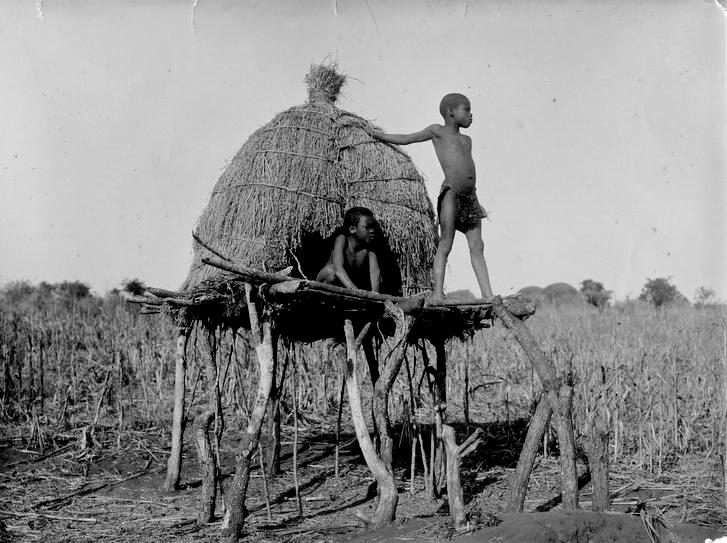
Figure 1.--This undated photograph shows Zulu boys in a raised hut. We assume it was built so that the boys had some shelter while tending cattle. It wa probably taken some time around the turn-of-the 20th century. |

|
The Zulu like several other African tribes had a cattle-based economy. This was supplemented by agriculture. Wealth was, however, more determined by cattle possession than any agricultural measure. The principal Zuklu economic and social unit was the village, And the villages supported by agriculture and cattle raising were econinically self-suficent. There was a sharp gender divide. The women and girls worked in agriculture. The crops raised included: mealies, Kaffir maize, pumpkins, watermelons, calabashes, native sugar reeds, and various kinds of tubers and beans. The Zulu like other tribes developed ceremonies, rituals, and magic as part of the agricultural process. Especially important was the First Fruits ceremony (late-December) in which the king partakes of the new crops. As South Africa is in the southern hemisphere, December is not the begiining of winter but the late-Spring, rather like June in the northen hemisphere. An importanht part of the ceremony is the magical strengthening of the king and a larger military review. The men and boys were responsible for tending the livestock, especially the cattle. Cattle were important because they provided the most important food stuffs (meat and amasi--soured milk). The hides were used for both clothing and shields. Cattle were especially important because they were how wives were acquiring wives through lobola--the bride price. Cattle also has religious importance. The Sacrifice of cattle was the central religious rite and the means of propitiating ancestors. Zulu life has changed substabntilly in modern South Africa. The Zulu like most rural black South Africans are poor. Traditional economic patterns do not do not generate adequare income. The women continue to remain at home and pursue subsistence agriculture. The men seek work in the cities, but because their educational achievements are commonly limited, the opportunities are commonly limited to low paying jobs. Cattle coninue to be the primary symbol of wealth, although modern Zuklus often have only a few head. As a result, they are now rarely slaugtered for meat, but primarily for ritual purposes.
Navigate the Boys' Historical Clothing South African pages:
[Return to the Main Zulu page]
[Return to the Main African tribal page]
[Return to the Main South African page]
[S.A. school uniforms]
[S.A. choirs]
[S.A. scouts]
Navigate the Boys' Historical Clothing Web Site:
[Return to the South African population]
[Introduction]
[Activities]
[Biographies]
[Chronology]
[Clothing styles]
[Countries]
[Bibliographies]
[Contributions]
[FAQs]
[Glossaries]
[Images]
[Links]
[Registration]
[Tools]
[Boys' Clothing Home]
